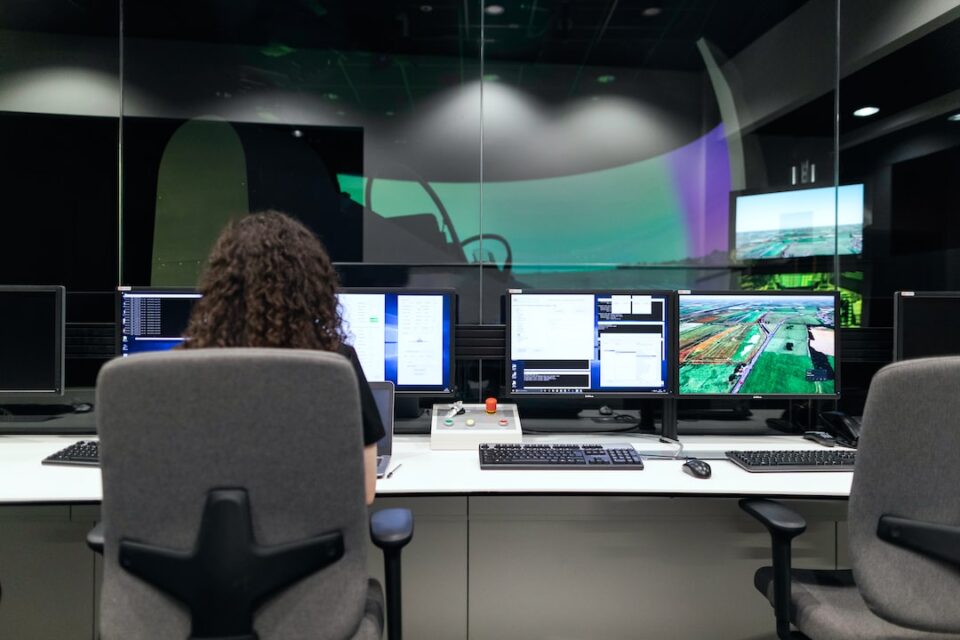The use of drones, also known as Unmanned Aerial Vehicles (UAVs), is increasingly common in various industries. Drones were initially used for military purposes, but their versatility and efficiency have led to their incorporation in various fields, with many benefits. Drones are equipped with advanced technology such as sensors, cameras, and advanced software that allow them to achieve tasks that would be impossible with human intervention. This article will explore the various industries that have seen an increase in drone use and the advantages that have come with the adoption of this technology.
Agriculture
Drones have brought a significant positive impact on agriculture in various ways. Firstly, drone technology provides farmers with a bird’s eye view of their crops, allowing them to detect any issues early before they escalate. For instance, drones equipped with hyperspectral, multispectral, or thermal sensors can identify changes in soil temperature, plant health, and moisture levels that could be indicative of plant stress or disease. As a result, farmers can address these issues early, boosting crop yields and reducing the amount of pesticides and fertilizers applied.
Additionally, drones can be used to spray crops efficiently and accurately. Compared to traditional methods such as tractors, drones offer precise application, reducing chemical use and saving time and costs. Farmers can also cover large areas of land in a shorter time, increasing productivity. Therefore, drones have revolutionized agriculture by making it more efficient and sustainable.
Construction
Construction sites can be hazardous environments for workers, and there is a need to ensure safety by minimizing the risks. Drones can help maintain safety by conducting surveys and inspections of construction sites, identifying any hazards. For example, drones can inspect tall structures, power lines, and transmission towers, which can be challenging and risky to survey physically. Additionally, drones can be equipped with cameras to capture data about a construction site’s progress, helping project managers monitor progress and identify problems. This data can also create 3D maps and models that can be used to assess work progress quickly and detect any discrepancies.
Moreover, drones can be used in building or constructing projects as survey teams, providing measurements for the construction of buildings, roads, bridges, and other infrastructures. Drones make these activities take less time since they can access hard-to-reach areas, reducing the workforce required.
Transportation
Drones are beginning to shift the transport industry, allowing for deliveries to become faster and more streamlined. Drones are capable of delivering packages of up to 5 pounds from one place to another, increasingly using GPS mapping systems, and conducting autonomous and efficient deliveries.
The ability of drones to deliver packages offers significant benefits to emergency services teams operating in hard-to-reach areas. Drones can carry medicine, blood, and medical supplies quickly, and they can continuously relay information to medical facilities. Deliveries are made in real-time, meaning that response teams can respond to medical emergencies quickly, reducing the number of fatalities and serious injuries.
Utility companies
Utility companies have begun to use drones to inspect power lines and transmission towers, reducing potential costs and increasing accuracy. Drones are equipped with technology that can detect damaged equipment, such as overheated wires, and pinpoint the location of faults on power lines. Faults can disrupt power supply to entire regions, creating significant economic losses, and reducing power supply costs helps to prevent the disruption of supply.
Drones can also prepare maps and real-time visual inspections, saving time and power supply companies’ inspection costs. Utility companies can use the detailed information obtained from drones to perform maintenance checks and plan future projects, increasing the efficiency of their operations significantly.
Security
With the technology advancements that have been brought about by drones, security services firms can use drones to monitor large areas. Drones are equipped with cameras that enable security personnel to monitor activities in restricted areas, especially in monitoring and securing the borders, protecting against intruders, and identifying potential threats. Areas where security is heightened are difficult to access by security personnel which places the safety of the officers at risk and securing such areas will be greatly enhanced.
In addition, drones are used for surveillance purposes in situations of natural calamities, alerting security personnel in real-time of disaster scenes to deploy emergency medical teams and other forms of rescue. This is essential in identifying survivors or stranded people, taking a shorter time than the traditional search methods.
Conclusion
In conclusion, the benefits of drone technology have transcended military and surveillance operations. The mainstreaming of this technology has increased efficiency, productivity and safety in multiple industries. Agriculture, construction, transportation, utility companies, and security services are sectors that have seen the tremendous impact of drones.
It is essential to acknowledge that drones lessened the traditional methods’ workload and outperformed their ability to reach high-reach areas and conduct inspections on hazardous environments. The benefits of drone technology have increased the safety and effectiveness of numerous industries hence enhancing collaborations and generating more information for planning, future developments, and better decision-making processes.


